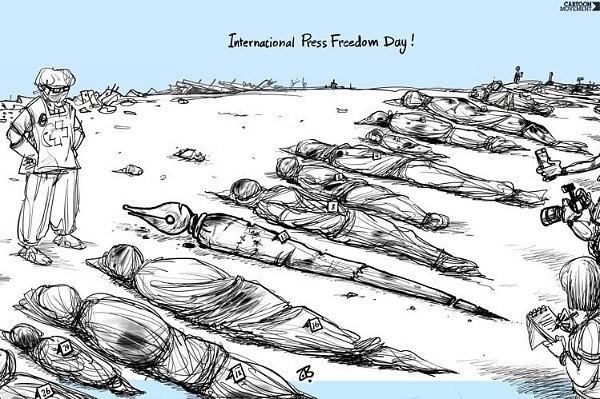
Scribe And Prejudice: Investigative Journalist Who Wrote For Local Daily In Jharkhand Abducted, Beaten To Death
Chandan Tiwary, a 32-year-old journalist of the vernacular daily, Aaj, was allegedly abducted and beaten to death in Jharkhand, reports The Hindustan Times. The police have said that he was murdered in Chatra district on late Monday night. A few months ago, he had complained about a threat to his life.
Police found Tiwary after district hours in a critically wounded condition at the Baltharwa forest, which comes under Simaria police station.
Earlier, he was kidnapped by unidentified motorcycle-borne men from Pathalgadda. Police then brought the injured reporter to the Simaria Referral Hospital where they declared him brought dead.
In April, Tiwary had earlier received a threat to his life and informed the local police. “Following exposure of irregularities in PM Awas Yojana and construction of sheds for goat rearing on social media, I have been threatened with dire consequences by Mahesh Dangi, husband of the local Mukhiya. I fear threats from Mahesh, Md Serajul and a para teacher Devaki Dangi,” he said in the written information on 6 April 2018.
Chatra deputy commissioner (DC) Jitendra Singh has said a medical board will conduct the postmortem examination of the journalist. A special investigation team (SIT) would be probing his murder, said the district’s SP Akhilesh B Verior, who had inspected the place of occurrence on Tuesday morning.
Chandan was a block-level reporter for Aaj, a Hindi vernacular. He was the son of labour union leader Raghuwar Tiwary and hailed from Dumbi village under the Pathalgadda police station in Chatra district.
The murder of Tiwary is the second murder of a Journalist witnessed in Chatra since May 2016, after TV journalist Indradev Yadav was shot dead. The Investigation revealed the involvement of a Maoist faction Tritiya-Sammelan Prastuti Committee (TPC).
In the search for truth. Journalists in India have frequently faced harassment and intimidation by police, politicians, bureaucrats and criminal gangs. According to a US-based Committee to Protect Journalists, crimes against journalists have been on the rise since 1992, as more than 40 journalists have been killed.